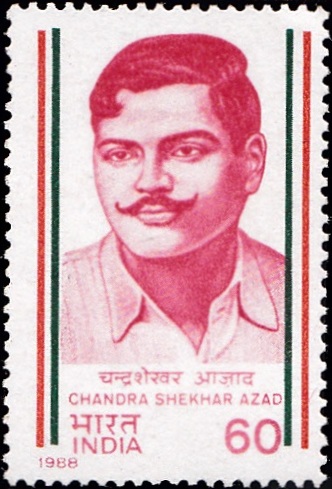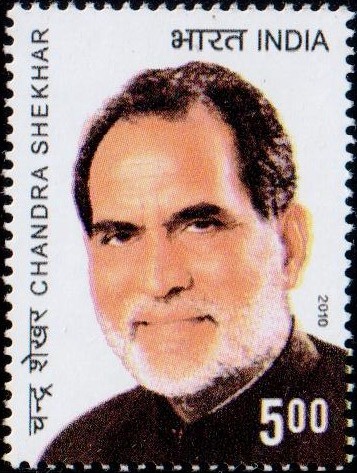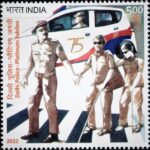
Chandra Shekhar Azad
A commemorative postage stamp on the Death Anniversary of Chandrasekhar Azad, an Indian revolutionary :
 Issued by India
Issued by India
Issued on Feb 27, 1988
Description of Designs : The stamp is designed by India Security Press, Nashik Road. The first day cover is designed by Shri Sankha Samantha and cancellation by Smt. Nenu Gupta.
Type : Stamp, Mint Condition
Colour : Multi colour
Denomination : 60 Paise
Overall size : 4.06 x 2.73 cms.
Printing size : 3.71 x 2.38 cms.
Perforation : 13 x 13
Paper : Indigenous unwatermarked PG Matt coated stamp paper
Number Printed : 10,00,000
Number per issue sheet : 40
Printing Process : Photogravure
Printed : India Security Press
Name : Chandra Shekhar Tiwari
Born on Jul 23, 1906 at Bhavra, Alirajpur, Central India Agency, British India
Died on Feb 27, 1931 at Allahabad, United Provinces, British India
About :
- Chandra Shekhar Azad was born on 23rd July, 1906 in Bhavra, a village formerly in Alirajpur State, now a part of Jhabua district in Madhya Pradesh. He was the son of Jagrani Devi and Pandit Sita Ram Tiwari.
- He received his early schooling in Bhavra. It is known that when he was about 14 years old he reached Varanasi where he entered a Sanskrit school. The young Chandra Shekhar was fascinated by the non-cooperation movement under Mahatma Gandhi‘s leadership (1920-21). Soon he was drawn into it, resulting in his arrest and trial. He was defiant in court, declaring his name to be ‘Azad‘, his father’s name to be ‘Swatantra’ and his residence to be ‘Prison’. The magistrate was provoked to sentence him to fifteen lashes. The courage and fortitude of Chandra Shekhar were appreciated and the name of ‘Azad’ was to last a life-time.
- Chandra Shekhar came into contact with Manmath Nath Gupta and through him he joined the Hindustan Socialist Republican Army. Known as ‘Quick Silver‘ among his associates, he took an active part in every armed action of the party under the leadership of Ram Prasad Bismil. He was involved in the Kakori Conspiracy (1926) the attempt to blow up the Viceroy’s train (1926), the Assembly bomb incident (1929), the Delhi conspiracy, the shooting of the Assistant Superintendent of Police, J.P. Saunders at Lahore (1928) and the 2nd Lahore conspiracy. He was betrayed by an associate on Feb. 27, 1931. Azad was surrounded in the Alfred Park, Allahabad, by a police party. In the shoot out Azad was severely injured. Left with only one bullet, he chose to end his life at his own hands rather than surrender to the police, living up to his ideal that he lived free and died free. He had justified his name “Azad“.








[…] Kakori, Teerhat and Deluaha cases. His contemporary revolutionaries included Yogendra Shukla, Chandrasekhar Azad and Kesav Chandra Chakravarty. He spent a total of more than 16 years behind bars, on different […]
[…] life, Bishwanath Roy joined as a soldier of the ‘Hindustan Socialist Republic Army’ founded by Chandra Shekhar Azad. His activities during this period are shrouded in secrecy, but were dangerous enough for the […]